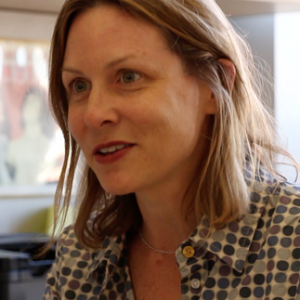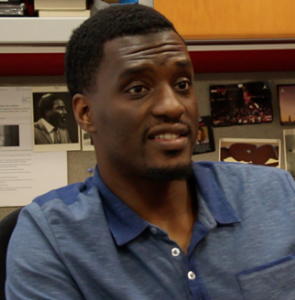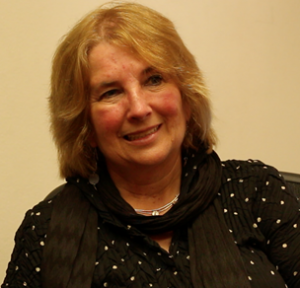USC #SelfieClass Examines Online Photos as Cultural Artifacts
Scholars around globe analyze gender, sexuality and race portrayed in social media
Download the audio slide show • Download the transcript
Contact: Tanya Abrams at tanyaabr@usc.edu or (213) 740-6973; or Andrew Good at gooda@usc.edu or (213) 740-8606
Selfies have become the cultural artifacts of our time, the digital mosaic that reveals how society views gender, race, class and sexuality in the 21st century.
In USC’s #SelfieClass — formally known as “Writing 150: Writing and Critical Reasoning: Identity and Diversity” — freshman students critically examined society’s influence on self-identity and how selfies reflect and affect the global culture in which we live.
The class is led by Mark Marino, an associate professor at the USC Dornsife College of Letters, Arts and Sciences. Marino’s work has often focused on digital spaces, including netprov, a form of narrative storytelling on social media.
“When we look at selfies, we’re also looking at the beginning of the 21st century,” Marino said. “The cultural moment of the selfies will pass and become something that’s iconic of our age, the same way that photographic self-portraits or painting self-portraits or religious journals were the selfies of their moment.”
In class discussions and individual interviews, students said their spontaneous snapshots often revealed subconscious feelings about their own femininity, sexuality and ethnicity. They’ve used selfies to distance themselves from one group in hopes of being accepted by another.
Why Are Selfies Worth Examining?
USC #SelfieClass students, along with students in a sister class at UCLA, are joining a growing number of scholars throughout campus and around the world who critically analyze these constructed images and document their societal significance. At USC, these scholars include experts in art history, race and ethnic identity, and critical media studies.
Expert in media history
and representation in popular culture
“Selfies are not just about self-portraiture. They are also autobiographies and autoethnographies,” said Alison Trope, clinical professor at the USC Annenberg School for Communication and Journalism. Trope has used selfies in class to examine gender norms, race and ethnicity. “The more interesting ones deliberately challenge conventions or templates of a beautiful face and body, and really try to show something broader about who you are as a person, about how your identity can be about performance or politics or changing norms. As this kind of use of the selfie travels via networks and social media, it can potentially take on a kind of cultural and collective power.”
Contact: (213) 821-1291 or trope@usc.edu
Expert in race and ethnicity,
social movements and pop-culture
“How we see ourselves is tied to how the world sees us. And how we believe the world sees us is shaped by structures of inequality and structures of perception that we’re conditioned by, that we interact with every day,” said Taj Frazier, associate professor at the USC Annenberg School for Communication and Journalism. Selfies also present an unprecedented opportunity for diverse groups of people to challenge these perceptions.
Contact: (213) 740-6595 or rfrazier@usc.edu
Expert in visual culture
and early 20th Century cultural history
“People have been taking self-portraits ever since they’ve been taking photographs,” said Kate Flint, provost professor of English and art history at the USC Dornsife College of Letters, Arts and Sciences. “What’s new today, and what people are going to think about with selfies in the future, is that so many of them are completely spontaneous.” Flint noted that the earliest photographers experimented with highly posed images that often included cheeky self-references.
Contact: (213) 740-2808 or kflint@dornsife.usc.edu







